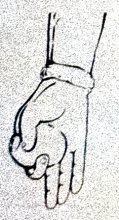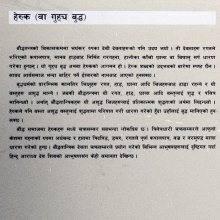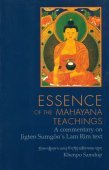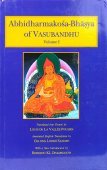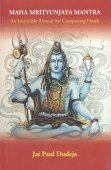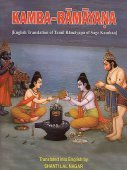Purity: 2 definitions
Introduction:
Purity means something in Hinduism, Sanskrit, the history of ancient India. If you want to know the exact meaning, history, etymology or English translation of this term then check out the descriptions on this page. Add your comment or reference to a book if you want to contribute to this summary article.
Images (photo gallery)
In Hinduism
Shaivism (Shaiva philosophy)
Source: SOAS University of London: Protective Rites in the Netra TantraPurity and Impurity are key elements in Tantric ritual practice. Where the orthodox Brahmin performs the rituals in order to retain purity, the Tantric transgresses purity. The latter's participation in rituals that use substances deemed impure, such as meat, fish, human blood, or skulls, is an important characteristic of Tantric practice. [...] The Kaula's apparent non-Vedic, heterodox rituals redefined impurity as the state of bondage and ignorance. Here, impurity and purity become illusory categories that bar the individual from the recognition of the divine. Rather the focus on the pure-impure dichotomy, the practitioner is to abolish all distinctions between the two. Flood (2003, p. 215) explains the connection between the monarchy and the kāpālika-like practices.

Shaiva (शैव, śaiva) or Shaivism (śaivism) represents a tradition of Hinduism worshiping Shiva as the supreme being. Closely related to Shaktism, Shaiva literature includes a range of scriptures, including Tantras, while the root of this tradition may be traced back to the ancient Vedas.
India history and geography
Source: Singhi Jain Series: Ratnaprabha-suri’s Kuvalayamala-katha (history)Purity (of lines) represents a quality of a good painting, according to the rules of Citrasūtra and the Kathās (narrative poems) such as Uddyotanasūri in his 8th-century Kuvalayamālā (a Prakrit Campū, similar to Kāvya poetry).—Page 233.7: There is a mention of a young painter bringing a cloth-painting on which was depicted the portrait of the daughter of the king of Ujjayinī. The painting was marked with the purity of lines, richness of colours, according to different compositions, beautiful stripling or seedling to show the effect of surroundings or high and low surfaces and right measurements and representation of different lines of painting like sādṛśya. [...]

The history of India traces the identification of countries, villages, towns and other regions of India, as well as mythology, zoology, royal dynasties, rulers, tribes, local festivities and traditions and regional languages. Ancient India enjoyed religious freedom and encourages the path of Dharma, a concept common to Buddhism, Hinduism, and Jainism.
See also (Relevant definitions)
Ends with: Elemental Purity, Impurity, Natural purity.
Full-text (+1108): Vishuddhi, Shauca, Shuddhi, Nairmalya, Sattvasamshuddhi, Suddhata, Vaishadya, Sattvata, Svacchata, Bhavashuddhi, Puti, Prayatya, Visuddhata, Pavitrya, Prayatata, Atmashuddhi, Punyata, Puṇya, Samshuddhi, Arthashauca.
Relevant text
Search found 354 books and stories containing Purity; (plurals include: Purities). You can also click to the full overview containing English textual excerpts. Below are direct links for the most relevant articles:
The Great Chariot (by Longchenpa)
Part 1 - How peace is attained < [B. The explanation of the kayas and wisdoms]
Part 1b.1a - The support: The explanation of alaya and consciousness < [B. The extensive explanation of the nature of karma]
Part 3b - The kaya of the manifestation of enlightenment < [B. The explanation of the kayas and wisdoms]
The Great Chronicle of Buddhas (by Ven. Mingun Sayadaw)
Part 12 - The Seven Purifications of a Buddha < [Chapter 7 - The Attainment of Buddhahood]
Notes (c): What are the characteristics of Morality? < [Chapter 6 - On Pāramitā]
Part 6f - Fifteen Kinds of Conduct and Fivefold Higher Knowledge < [Chapter 7 - On Miscellany]
A Survey of Paramattha Dhammas (by Sujin Boriharnwanaket)
Chapter 3 - Different Kinds Of Purity < [Part 5 - The Development Of Insight]
Chapter 6 - Different Aspects of the Four Paramattha Dhammas < [Part 1 - General Introduction]
Chapter 24 - The Variegated Nature Of Citta < [Part 2 - Citta]
Vaisheshika-sutra with Commentary (by Nandalal Sinha)
Sūtra 6.2.5 (What objects are pure or holy) < [Chapter 2 - Of the Production of Dharma and A-dharma]
Sūtra 6.2.4 (Upadhā and anupadhā explained) < [Chapter 2 - Of the Production of Dharma and A-dharma]
Sūtra 10.2.8 (Observances produce adṛṣṭa as their fruit,...) < [Chapter 2 - Of Other Forms of Cognition]
Shaiva Upanishads (A Critical Study) (by Arpita Chakraborty)
5.6. Parā and Aparā Vidyā < [Chapter 6 - Śiva as Brahman in Śaiva Upaniṣads]
14. The Pañcabrahma Veda Mantra < [Chapter 5 - Essence of Pañcabrahma Upaniṣad]
Kavyamimamsa of Rajasekhara (Study) (by Debabrata Barai)
Part 5 - Rājaśekhara’s Discussion on Daily Routine < [Chapter 5 - Analyasis and Interpretations of the Kāvyamīmāṃsā]
Part 5.1 - Environment and Retreat of Kavi (poets) < [Chapter 5 - Analyasis and Interpretations of the Kāvyamīmāṃsā]
Related products
